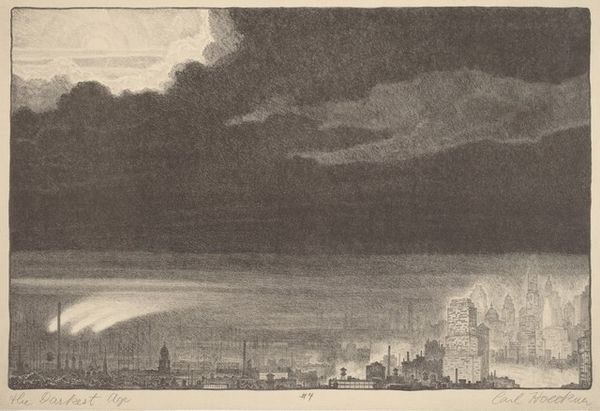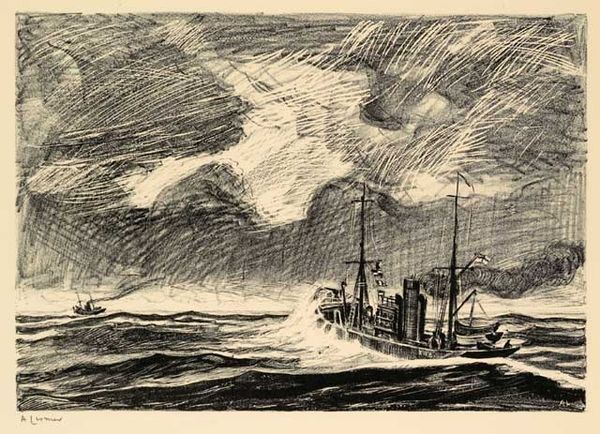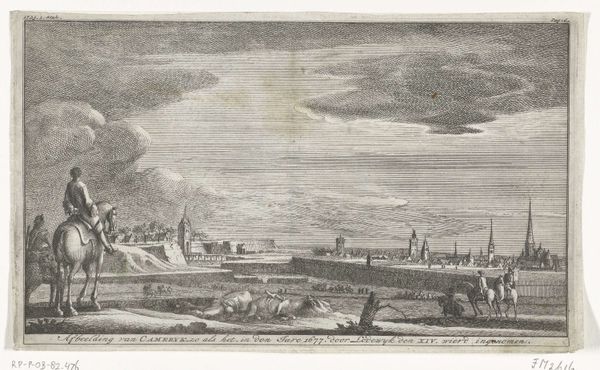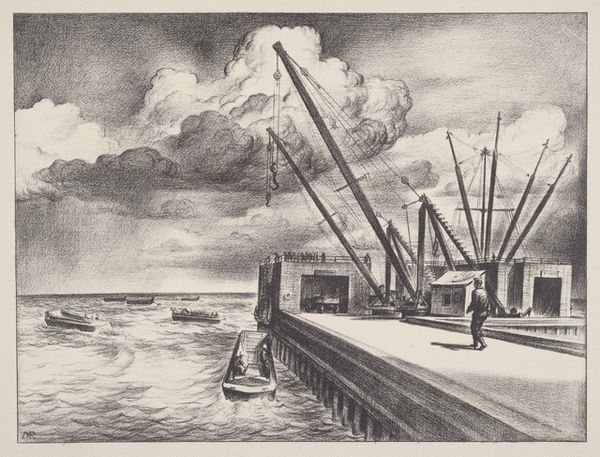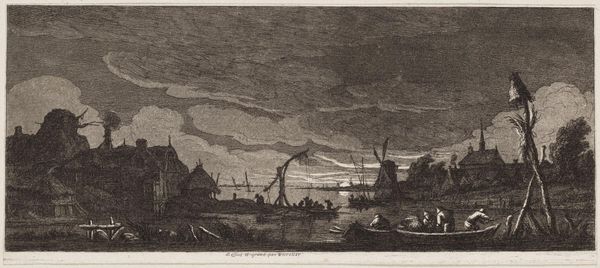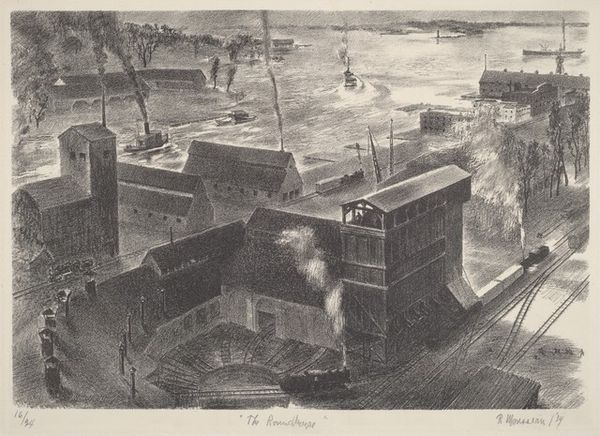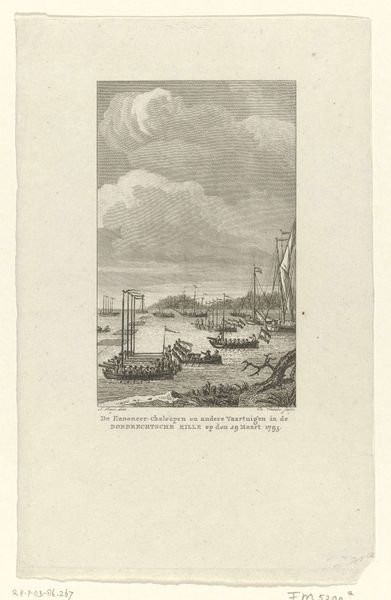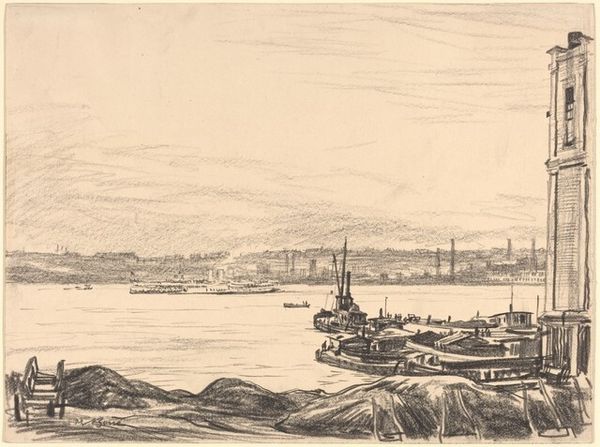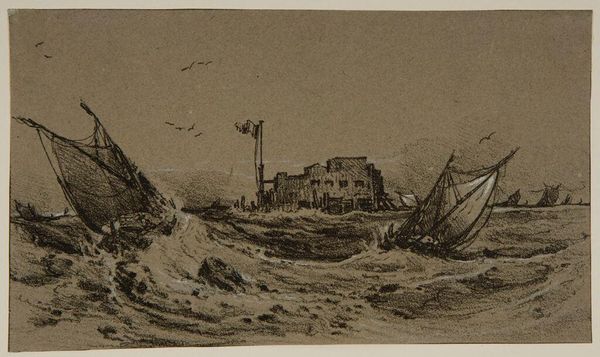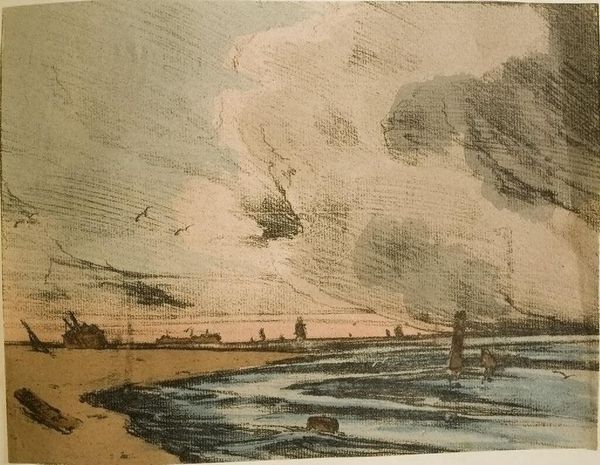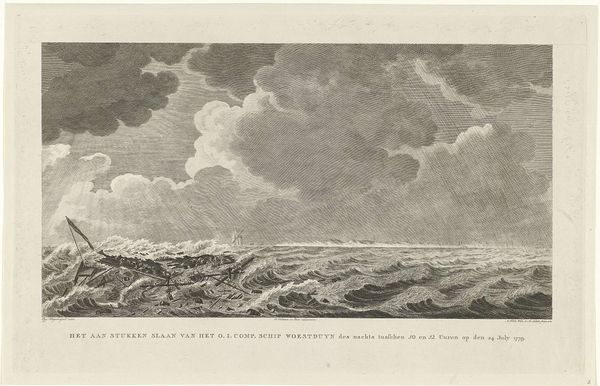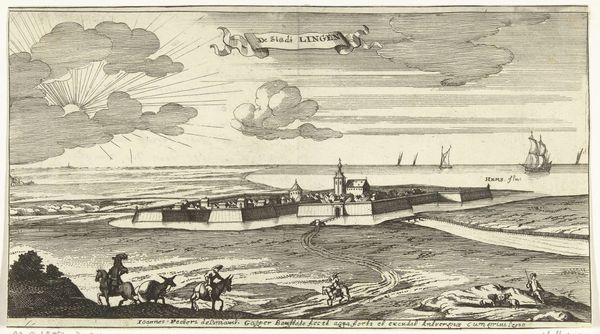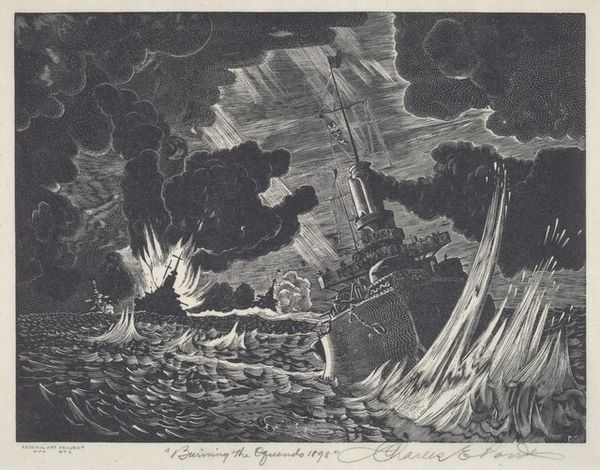
drawing, print, pencil, graphite
#
drawing
# print
#
pencil sketch
#
landscape
#
pencil drawing
#
pencil
#
graphite
#
cityscape
#
realism
Dimensions: image: 302 x 453 mm sheet: 403 x 580 mm
Copyright: National Gallery of Art: CC0 1.0
Curator: Before us is Raymond White Skolfield’s “New York Harbor,” a graphite pencil print from 1936. Editor: What a brooding, almost gothic cityscape. The contrast between the velvety blacks and ashen grays, those churning skies... It creates an undeniable sense of foreboding, a feeling heightened by the stark geometry of the foreground. Curator: Skolfield created this during the Depression era; the harbor was a vital, yet often turbulent, place, especially for the working class. You see that tension in the looming industrial architecture against the flickering lights, hinting at activity, or perhaps unrest. Editor: Absolutely. Look at the way he uses the pencil – those dense, layered strokes. The composition is structured around horizontals that draw your eye back, creating spatial recession into this vast, potentially alienating, space. There's the Statue of Liberty in the background, almost dwarfed by the weather! Curator: That positionality is really critical. While Lady Liberty remained a powerful symbol of freedom, Skolfield subverts it, positioning her further back amidst the clamor of industrial structures to reveal the gap between the promise of liberty and the often harsh reality faced by workers and immigrants in 1930s New York. Editor: Interesting interpretation! From a purely visual standpoint, I’d argue that it reinforces the feeling of scale and atmospheric perspective – note how he blurs the distant details, giving depth to this scene. And he counterpoints it, of course, by the hard-edged detailing on those barges and the closest roof. Curator: Though differing interpretations are interesting, one element remains central to any: Skolfield prompts us to examine the harbor’s layered existence: industry and immigration, aspiration and hardship, all interwoven into the urban tapestry. Editor: A visual drama indeed. Its technical virtuosity is as compelling as its potential cultural meaning. It really invites repeated scrutiny, doesn’t it?
Comments
No comments
Be the first to comment and join the conversation on the ultimate creative platform.
